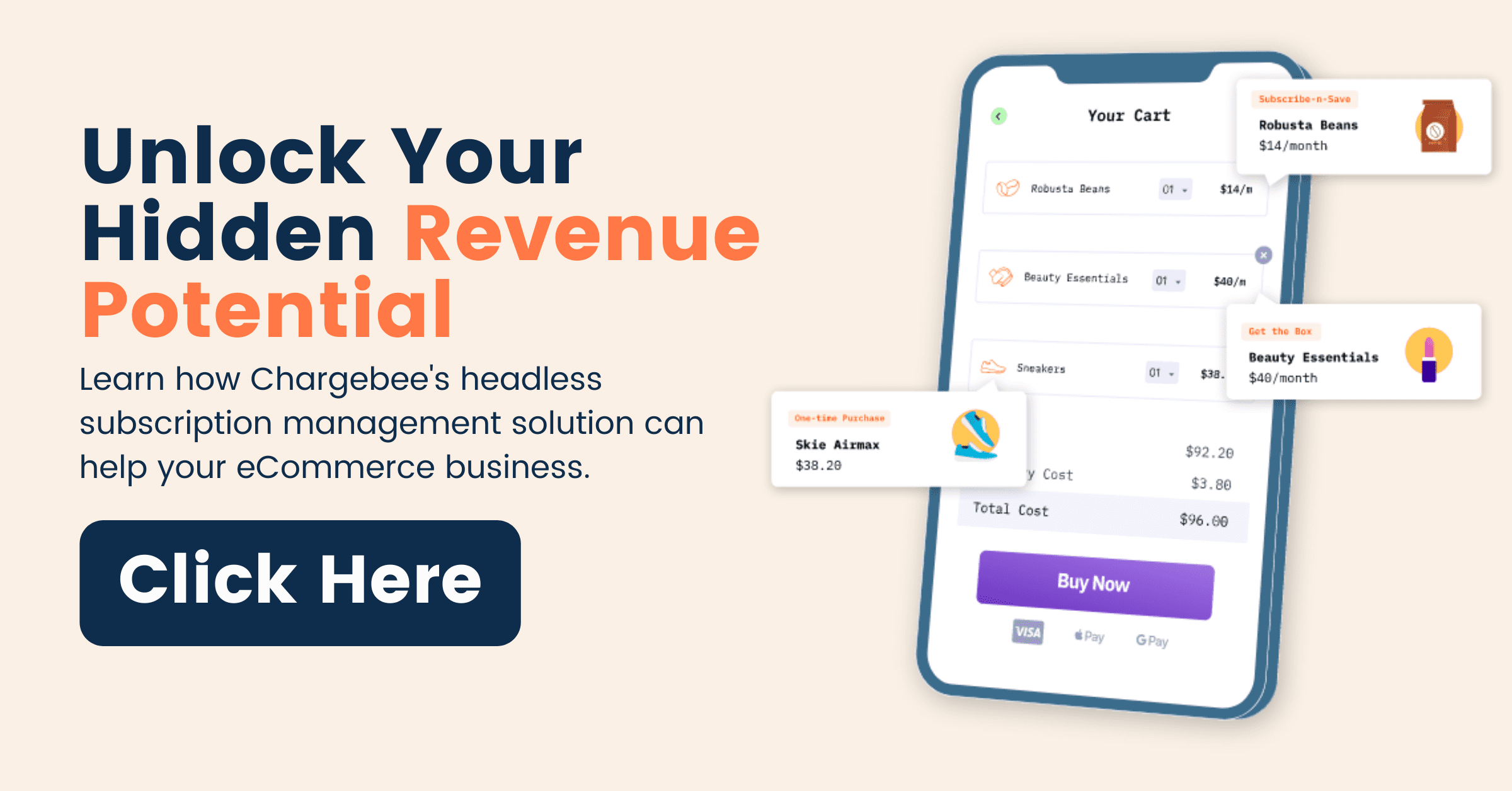Dollar Shave Club’s rise to fame has the same markings as Oakland Athletics from ’02. DSC started its journey with a severe handicap like the A’s marquee season. In 2011, DSC’s infantile David was battling the Gillette Goliath, which commanded >70% of the U.S. grooming industry’s market share. Instead of blitzkrieg expenditures, both the A’s and DSC focused on reimagining their playing fields to dethrone the existing giants. The A’s changed baseball with sabermetrics, DSC’s introduction of a low-cost subscription grooming service, and some nifty marketing execution changed the narrative and kickstarted the razor-wars.
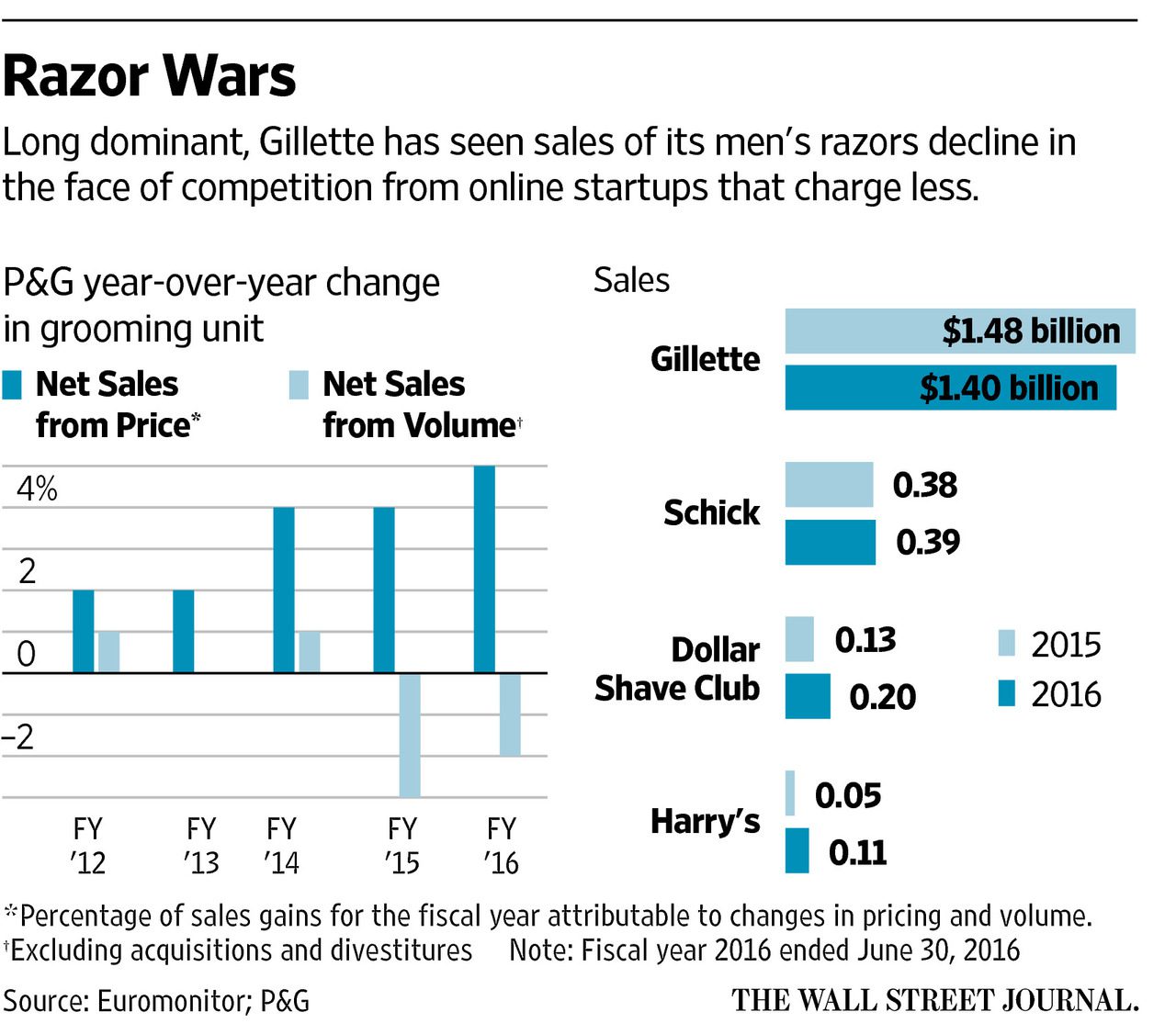
By 2017, Gillette’s market share tumbled to ~54%, while Dollar Shave Club became the world’s first direct-to-customer unicorn, inspired a new generation of subscription-led DTC retail businesses, and left the eCommerce world with three different lessons.
First, understanding changing customer needs before others is revolutionary. Razors and blades are replenishables and need constant replacement. Instead of having the customers purchase a product anew every time, DSC ‘automated’ purchases, maximizing convenience and building a steady recurring revenue stream by changing one-time transactions to prolonged relationships.
Second, simplified buyer journeys make purchase decisions easier. From wandering across aisles to three taps, one signup, and a checkout, DSC’s subscription eCommerce model truncate discovery-to-purchase flows for customers. It also placed the brand right in the customers’ pockets and within reach of a resource much more important than their money – their data.
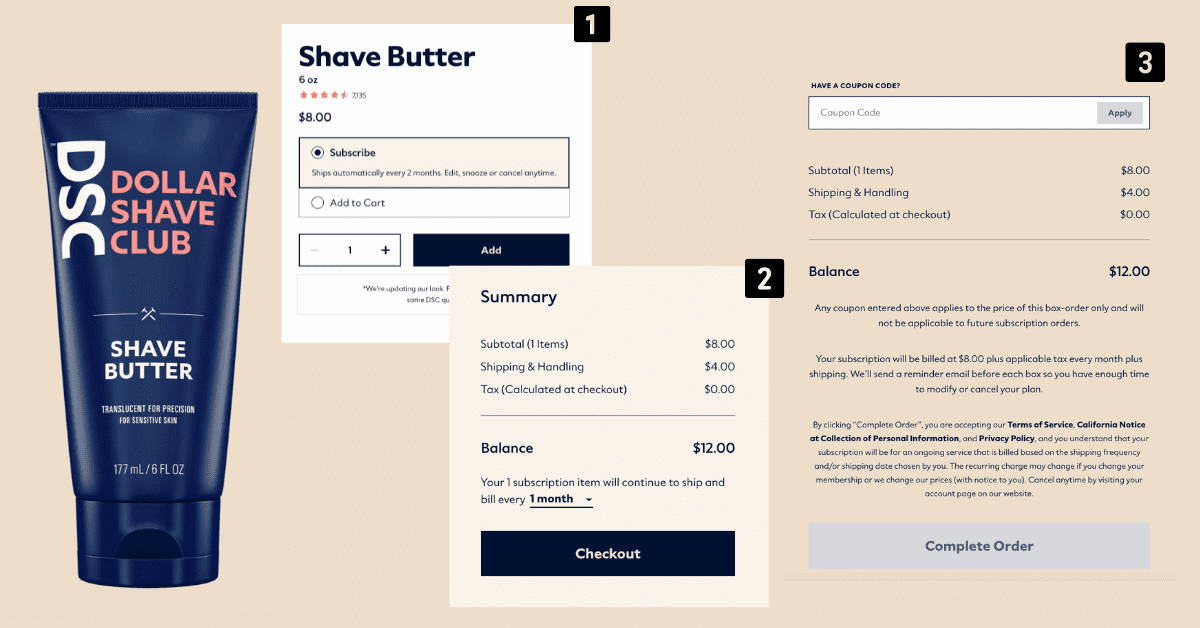
“We want to learn as much as we can about the customers so that we can provide customized products and great product recommendations.”
– Michael Dubin (Founder, Dollar Shave Club) in an interview with DigiDay
Third, rolling out products and experiments faster is a differentiator. Today’s DSC is a long shot from its promise of $1/month affordability. And why? Because with rapid experimentation, it realized that customer willingness to pay was higher than previously estimated. What’s more – rapid rollouts of new product lines helped DSC find more unique ways to maximize their ARPU – the brand went from transforming shaving experiences to conquering the bathroom.
How headless subscription management helped challenge the eCommerce status quo
By 2017, when Gillette launched its line of ‘On Demand‘ subscriptions, it had already paid a huge price. But why would a more prominent brand with a loyal customer base not introduce subscriptions earlier to battle the upstarts? The answer is in the underlying technological nuance.
You see, most prominent brands, especially ones who weren’t digital natives, started their eCommerce journeys with monolithic eCommerce architectures – that aren’t entirely frictionless. Since the frontend and backend are interlinked, introducing small changes (e.g., adding a subscriptions layer, launching new products) or implementing feature upgrades (introducing subscription deals, or enabling subscription management through pause/edit functionality for customers) would require you to reinvent your platform completely. And this is where modern DTC subscription eCommerce businesses found an opportunity to leverage the benefits of headless commerce.
Hypergrowth DTC subscription eCommerce companies today have primarily adopted the ‘headless commerce,’ and correspondingly, headless subscription and revenue management tools – which is now to eCommerce what ‘big data’ was to digital businesses in 2010. Headless commerce made simple plug-n-play upgrades possible. With little time and money, companies like DSC built advanced scale-worthy platforms that executed faster and could take on market leaders.
To keep up with growing subscription demand and make the purchase and post-purchase experiences (the two most sensitive touchpoints in subscriber journeys) smoother, adopting headless subscription management and revenue recognition model proved to be a gamechanger.
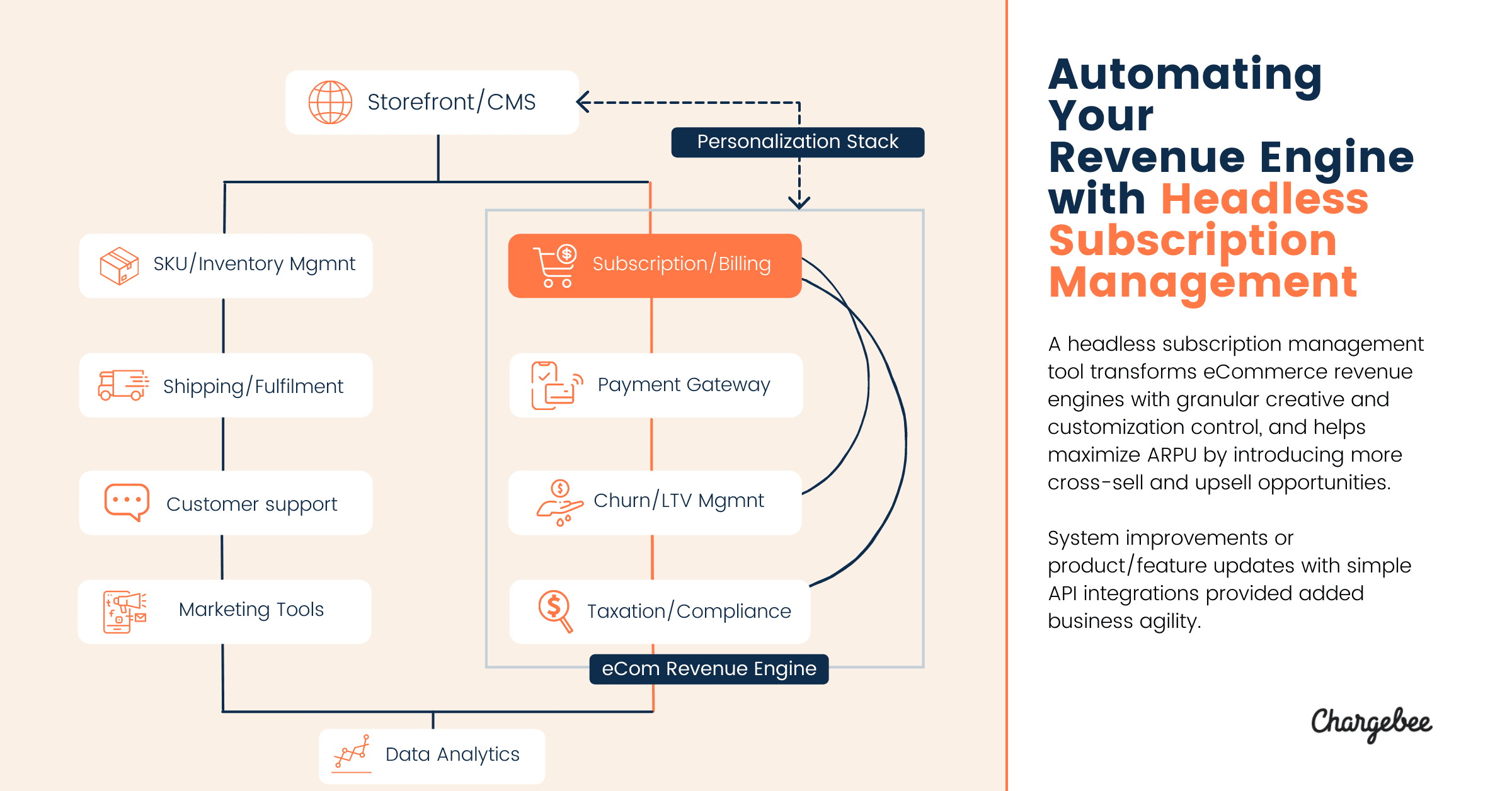
For subscription eCommerce businesses, headless revenue engines improved customer acquisition, transaction, and retention cycles by automating:
- Subscription management
- Customer retention and churn mitigation
- Revenue recognition,
- Transaction analytics
- Price experiments
- Taxation and recurring charge compliance, and more
Site maintenance, uptime, and technical firefighting now became the problem of headless commerce tools and solutions. With a headless architecture in place, launching a robust subscription service, on a budget, and without a large team of engineers suddenly became as easy as flipping a switch.
For eCommerce Companies, Headless Subscription Management is a Revenue Upgrade
The novelty of headless subscription management platforms is not just in automation or in faster turnaround times (TATs). It also removes operational rigidity. Each revenue function (billing, taxation, revenue analytics, and more) can be scaled independently without breaking systems around it.
The time, money, and people resources thus saved, could instead be rerouted to more strategic functions like – improving customer experiences, identifying potential upsell opportunities, and scaling the business. Here are the advantages a headless subscription management platform brings to your business:
Better No-code Omnichannel Experiences
Subscription management and billing tools of today do more than just enable seamless experiences, they allow simple eCommerce API integrations – deeming it possible to add functionality layers without adding lines of code and transform the revenue engines for eCommerce companies. By the virtue of being unlinked from the frontend, any additions/alterations are also transferable to other systems without causing significant structural changes or resource investments.
Here’s how it works. For subscription-first D2C companies like Superfoods, Tokyotreat, and others, Chargebee provides the opportunity to increase customer loyalty and LTV by intelligently bundling subscriptions with add-ons, accepting localized payments, and offering promotions, gift subscriptions, resend/refund options, and more.
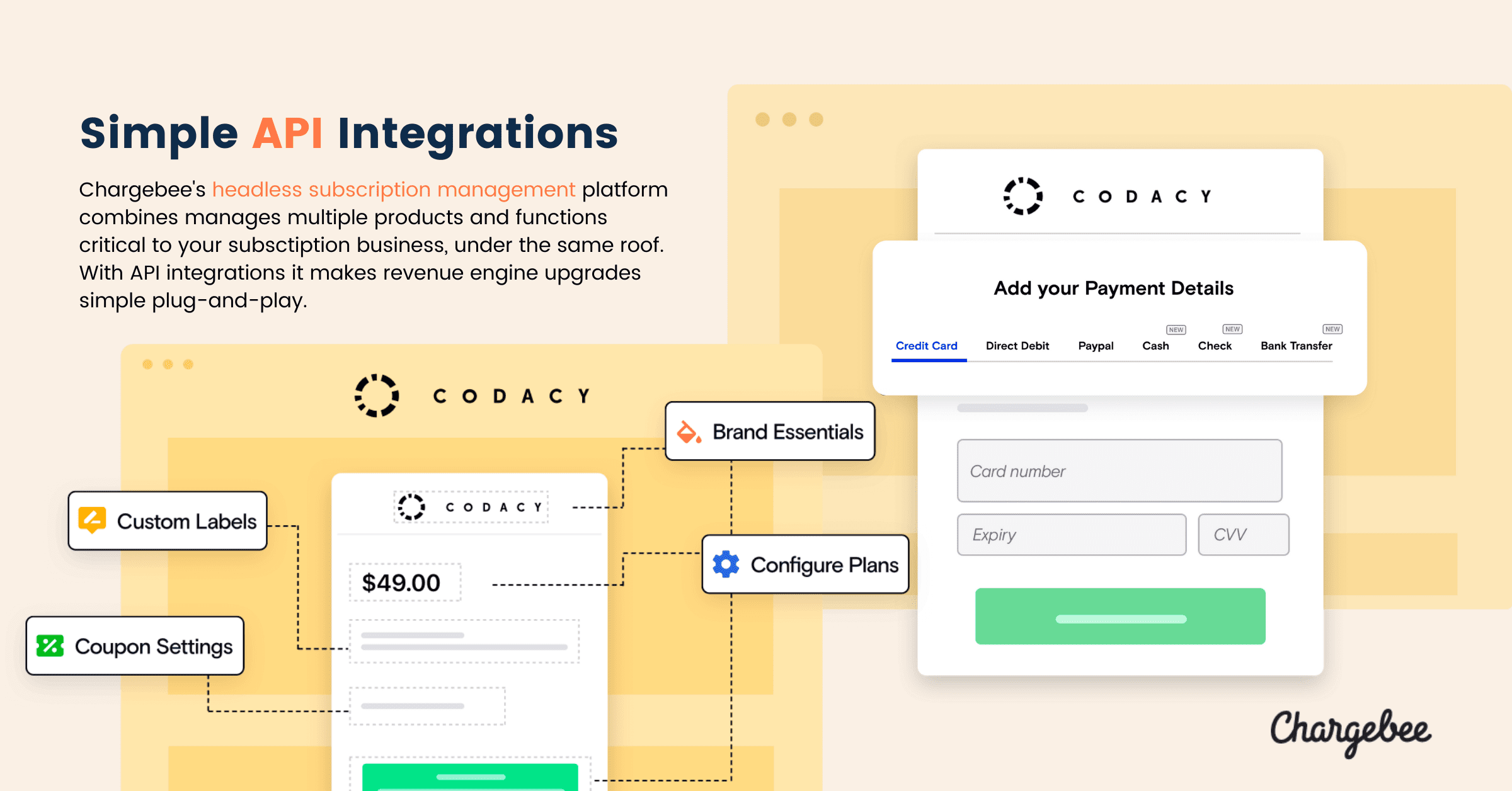
A minor tweak in any of the units mentioned above would reinvent the existing subscriptions and checkout flywheel in traditional revenue engines. On Chargebee, the change happens only once, applies uniformly across platforms (web, iOS, or android,) and does not disrupt existing customer experiences. Any changes in the data collected are also automatically updated within the connected finance, accounting, sales, and other existing tools.
It also generates better data documents, directly lifting page load-times – a critical factor in customer drop-offs at the point of purchase.
Greater accountability through deeper analytics
The success of eCommerce businesses is often characterized by continual improvement with changing customer needs. Headless subscription management can help product and engineering teams at hypergrowth eCommerce businesses by capturing critical customer data around orders, usage, and demographics at billing and checkout.
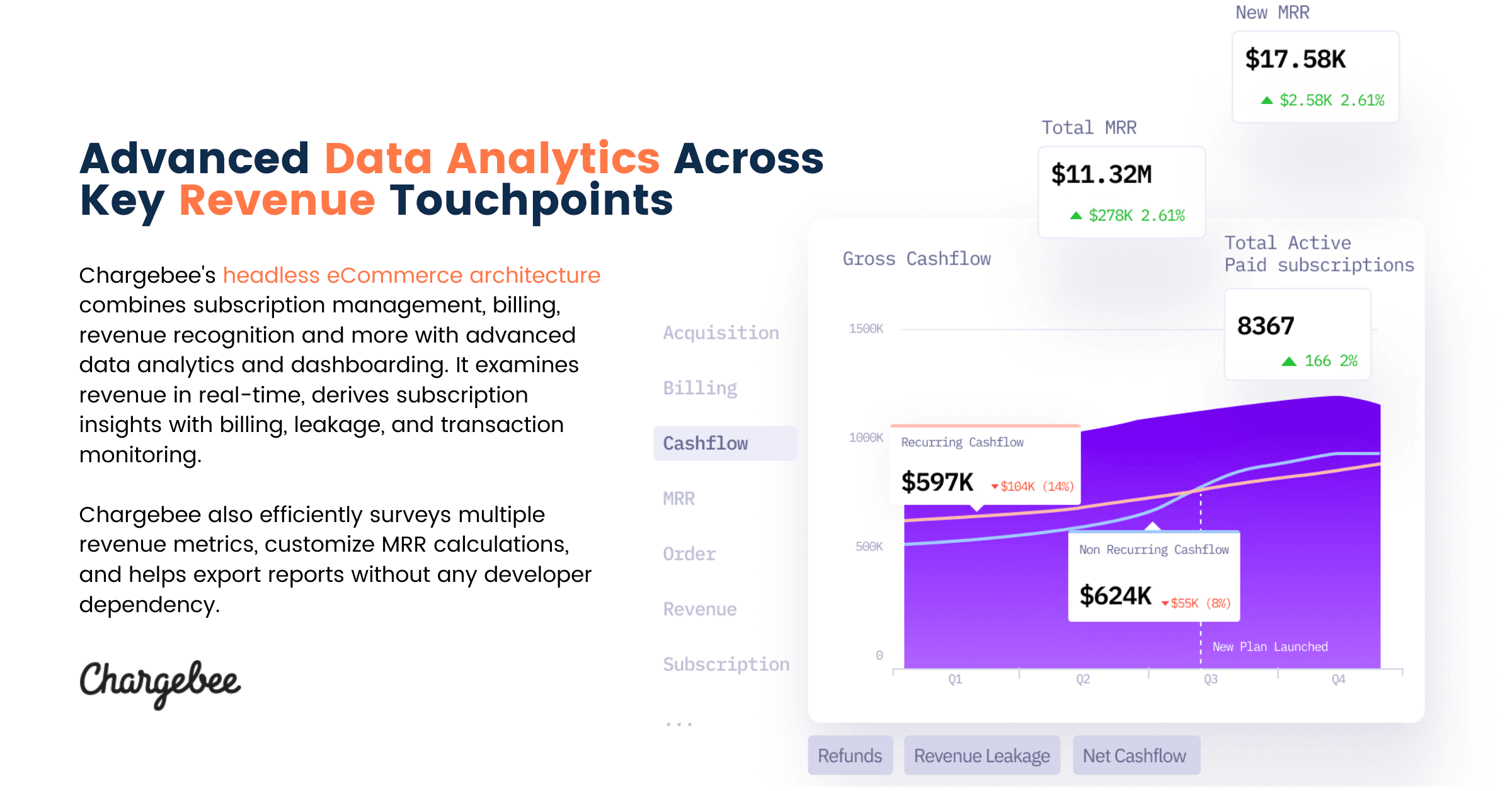
Since subscription eCommerce businesses rely more on relationships than transactions, a specialized data analytics layer can identify revenue bleeding risks faster. It can also help develop strategic countermeasures to plug them and grow customer LTV by reducing churn or identifying cross-selling/upselling opportunities.
The hallmark of an efficient revenue management platform is also in how acutely it captures customer and transaction data and how efficiently it feeds that data across the critical business units. Data captured by headless subscription management tools at checkout, billing, or even during subscription edits by the customer are then transferred to all relevant business tools – order management, invoicing, shipping, and more before a purchase order is fulfilled. This ensures streamless knowledge management and equips every key stakeholder in the customer journey informed.
Easier to scale irrespective of product roadmap
Hypergrowth eCommerce subscription businesses expanding to newer markets or launching new product lines also have a detailed product roadmap. Each roadmap is susceptible to multiple iterations based on A/B testing and adoption outcomes. Especially in a crowded market where differentiation is critical, headless revenue engines give these businesses the freedom to experiment with multiple tools and payment gateways, launch new subscription products, or even run pricing experiments faster.
Headless subscription management is truly platform-agnostic. It means even if one of your integrated tools (e.g., product recommendation) breaks down or needs tweaking to fit your growing demand, your subscription management or payments and billing systems continue to operate undeterred, saving you time and money.
Where do eCommerce subscriptions go from here?
When healthy food and beverage eCommerce company Superfoods approached Chargebee to grow its Average Order Value (AoV), it wanted a scalable revenue engine without reinventing its technical flywheel.
Chargebee’s flexibility allowed them to integrate their existing payment partners while fitting in seamlessly with their marketing and sales tools. It also allowed them to onboard new payment partners and launch localized pricing experiments to employ a data-led approach to their subscriptions go-to-market. As a result, within a year of implementation, Superfoods saw its revenue grow 4x.
For hyper-growth subscription eCommerce businesses, adopting a revenue engine with headless subscriptions management, billing, and revenue recognition stack continues to open newer opportunities and allows them to scale irrespective of their product roadmaps.
Are you ready to unlock the full power of headless subscription management and scale your eCommerce business?





